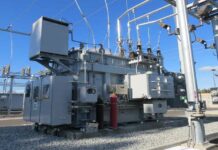Civil Engineering
Civil Engineering
Data Miners Dig for Corrosion Resistance
A better understanding of corrosion resistance may be possible using a data-mining tool, according to Penn State material scientists. This tool may also aid research in other areas where massive amounts of information exist. In data...
Civil Engineering
Radar Checks Buildings After Earthquakes
Recent advances in ground-penetrating radar, GPR , could be used to help structural engineers and conservationists assess the stability of historic buildings or buildings affected by earthquakes that otherwise appear sound. Writing in the International Journal...
Civil Engineering
3-D Printing Technology from CT Images May Be Used Effectively for Neurosurgical Planning
3D models, produced by combining a patient's CT scans and 3D printing technology are proving useful in neurosurgical planning. 3D printing technology is a fast and affordable way to build 3D models for neurosurgical planning. ...
Civil Engineering
Mega Wind Turbines of 20 MW
The present largest wind turbines have a capacity of 5-6 MW. Following five years of research at the joint European project UpWind, led by Risø National Laboratory for Sustainable Energy, the Technical University of Denmark (Risø DTU), scientists have...
Civil Engineering
Carbon Fiber Used to Reinforce Buildings; Protect from Explosion
Most buildings are not constructed to withstand an unexpected explosion or impact. Now, a researcher at the University of Missouri is working with the U.S. Army to test a method of retrofitting buildings to protect them in the case...
Civil Engineering
THE SOUTH AFRICAN EMBASSY
Addis Ababa, or “new flower” the capital city of Ethiopia is situated in the central highlands of this East African country, +- 2,300m above sea level. It sits on the edge of the Entoto mountain range which rise to...
Civil Engineering
New Research Advances Understanding of Lead Selenide Nanowires
The advancements of our electronic age rests on our ability to control how electric charge moves, from point A to point B, through circuitry. Doing so requires particular precision, for applications ranging from computers, image sensors and solar cells,...
Subscribe
- Never miss a story with notifications
- Gain full access to our premium content
- Browse free from any location or device.




























